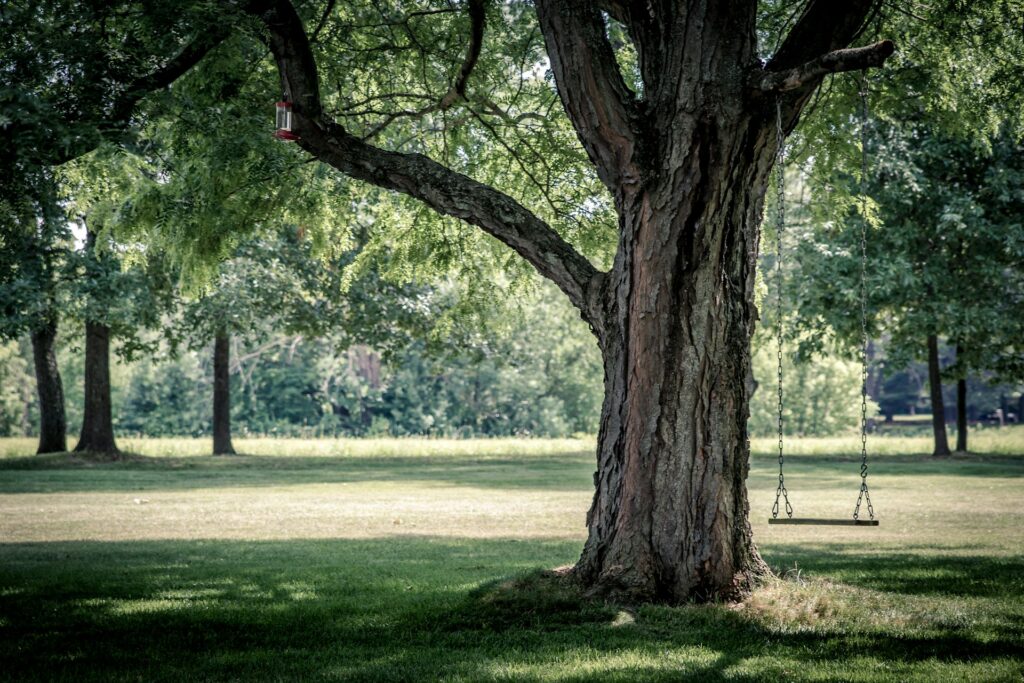When we think of forests, we often imagine a place of solitude, peaceful sounds of rustling leaves, the occasional bird call, and perhaps the scent of fresh earth. But beyond the obvious beauty of forests lies something far more profound—the secret language of trees. Trees communicate with each other, forming a complex network of relationships that reveal just how interconnected life truly is. In this blog post, we’ll explore how trees talk to one another, what forests can teach us about life, and why we should listen to what the trees are saying.
The Hidden Network: How Trees Communicate
The idea that trees communicate may sound like something out of a fairy tale, but it’s grounded in science. One of the most fascinating discoveries in forest ecology is the existence of the “Wood Wide Web”—a vast underground network of mycorrhizal fungi that connects trees and plants in a forest. This network acts as a communication system, allowing trees to send and receive information.
Through this system, trees can share nutrients, warn each other about disease or pest attacks, and even send signals when they are in distress. For example, when a tree is being attacked by insects, it can release chemicals into the air, warning nearby trees to bolster their defenses. In this way, trees work together to protect the forest as a whole.
But it doesn’t stop there. Trees also communicate through their leaves and roots. For instance, some trees release volatile organic compounds (VOCs) to attract beneficial insects or repel harmful ones. Others use root systems to release chemicals that can inhibit the growth of competing plants or help neighboring trees thrive.
The Wisdom of Trees: Lessons in Patience and Resilience
What can we, as humans, learn from this secret communication? One lesson comes from the way trees thrive despite the challenges they face. Trees live for decades, even centuries, enduring storms, droughts, and other harsh conditions. Yet they continue to grow, adapt, and find new ways to survive.
The resilience of trees is a powerful reminder that life is full of challenges, but with patience and persistence, we can weather storms and emerge stronger. Trees show us that growth isn’t always a straight path—it requires time, adaptability, and a willingness to grow in unexpected directions. Just as trees bend with the wind instead of breaking, we too can learn to be flexible and find ways to thrive even when things aren’t going as planned.
In the same way, trees teach us the value of patience. While we might be accustomed to the fast pace of modern life, trees grow slowly, and their journey toward maturity takes decades or even centuries. This reminds us that some things take time to develop—whether it’s a career, a relationship, or personal growth. Just like the tree that takes decades to mature, our efforts today may take years to bear fruit, and that’s okay.
Interconnectedness: The Forest as a Model of Community
Forests are not just collections of trees; they are complex, interwoven ecosystems. Every tree, plant, fungus, insect, and animal has a role to play in maintaining the health of the forest. This interconnectedness is a powerful metaphor for the way human communities function.
Just like the trees in a forest, we rely on each other for support, protection, and growth. In a forest, each tree has its own unique contribution, but it’s the sum of these individual roles that makes the forest thrive. In our own lives, we benefit from the networks we build—whether through family, friends, or colleagues. Just as trees share nutrients and information with one another, we can learn to share our resources, ideas, and strengths to support those around us.
The idea of mutual support is also evident in how trees assist one another in times of need. For example, older trees in a forest often share nutrients with younger or weaker trees through their root systems. This kind of generosity and support is something we can apply to our own lives. We should remember the importance of helping others grow, whether it’s through mentorship, acts of kindness, or simply offering a listening ear.
The Importance of Forests for Our Well-Being
In addition to their remarkable communication and resilience, forests also offer significant benefits to our mental and physical health. Studies have shown that spending time in nature, particularly in forests, reduces stress, improves mood, and enhances overall well-being. The sounds of the forest—the rustling leaves, the chirping birds, the gentle breeze—have a calming effect that helps us reconnect with ourselves.
Just like trees, we often get caught up in the rush of life. Forests remind us to slow down and embrace the present moment. The next time you find yourself feeling overwhelmed, take a walk in a nearby forest and allow the natural world to remind you of the importance of balance, peace, and connection.
Conclusion: Listening to the Trees
The secret language of trees is one of mutual support, patience, and interconnectedness. Forests teach us valuable lessons about resilience, growth, and the importance of community. In a world that often values speed and individualism, trees show us the power of slow, steady progress and the importance of working together. By listening to the trees, we can learn to live more harmoniously with each other and the natural world.
So, the next time you find yourself walking through a forest, take a moment to pause and listen. There’s a world of wisdom beneath the canopy, waiting to teach you its secret language.
